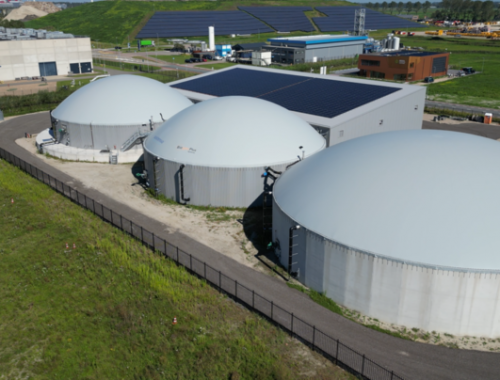Chinese gas outlook remains robust despite 2022 hurdles
SUMMARY
The overall picture for the fuel remains strong in the long term as China doubles down on efforts to transform its coal-dominated economy into a clean energy-based system.
By Shi WeijunChina’s energy market faced an unprecedented year in 2022 that saw demand for hydrocarbons decline for the first time in decades, but the long-term growth story for gas remains robust as the fuel is trusted by policymakers to complement the country’s unprecedented renewables buildout.
The past 12 months were extremely challenging for the Chinese gas industry due to a global gas supply squeeze, housing sector woes, and a sharp economic slowdown induced by COVID-19 restrictions – all of which resulted in anaemic gas demand growth. Apparent consumption edged down by 1.7% year-on-year to 366.3bn m³ in 2022, although city gas distributors signalled a more severe decline as they revised down volume growth targets from around 15% to less than 10%.
The bleak situation persisted into January too as consumption slumped by 7% to 37.5bn m³, according to a recent report from Sinopec’s Petroleum Exploration and Production Research Institute. The drop was mostly due to soft demand from the industrial sector as most gas-fuelled ceramic fabricators shut down for the Lunar New Year public holiday, and a relatively warm winter as the average temperature in January nationwide was 2°C higher than a year ago.
China’s full-year fuel consumption for 2022 revealed a mixed picture of increased reliance on coal, renewables and nuclear, which gained market shares at the expense of oil and gas. The trend marks the first time in a decade that the share of coal in the primary energy mix grew year-on-year, to 56.2% in 2022 from 56% in 2021, while the gas ratio receded to 8.5% from 8.9% over the same period.
Last year also saw absolute oil and gas consumptions falling for the first time in two decades, as these two highly import-reliant fossil fuels suffered from the Russian-Ukraine energy crisis.
“Amid the complex and severe domestic and external circumstances in 2022, the energy sector has thoroughly implemented the central government’s directive of putting energy security as first priority,” Hu Hanzhou, director of energy data at the National Bureau of Statistics, said recently in a summary of last year’s data.
China’s strategy is to leverage on its “national characteristic” of being coal abundant and allow coal to “fully play out its role as the backbone energy source,” according to Hu. At the same time, China would “continuously boost oil and gas exploration and development” as well as “significantly raise the ratio of non-fossil fuels,” Hu added.
The worst is over
After an underwhelming 2022, this year looks to be better as China’s reopening picks up momentum on the back of moderating gas prices and economic recovery while the long-term outlook for gas remains assured under Beijing’s energy transition roadmap.
Policymakers have given no indication they will abandon a target for gas to meet 15% of the primary energy mix by the end of this decade, which requires demand to expand at a compound annual growth rate of 5% from 2022 to 2030.
On Sunday the Chinese government set a conservative GDP growth target of 5% for this year. This has primed preliminary expectations for domestic gas demand to grow by 6% year-on-year – equivalent to 22bn m³ or 16mn mt of LNG – as the country’s reopening will help to boost commercial and industrial consumption. Much of this should be met by domestic gas production, which grew by 6% last year to 220.11bn m³ and is projected to expand by about the same rate in 2023.
Chinese investment in gas infrastructure has remained robust, with work starting on new cross-country trunk lines such as the fourth West-East Pipeline and the Chinese leg of the Power of Siberia pipeline, as well as on new LNG regasification terminals.
The nominal capacity of China’s operational LNG terminals stood at 96mn metric tons/year as of June 2022, with another 85mn mt/yr under construction, according to data from Global Energy Monitor. By way of comparison China imported 63.4mn mt of LNG in 2022.
Robust LNG contracting
Neither did last year’s blip in the Chinese gas market dampen appetite among companies for contracting long-term supplies of LNG. In November 2022 Sinopec and QatarEnergy signed a sales and purchase agreement (SPA) for 4mn mt/yr to be delivered from the Qatari NOC’s North Field Expansion project over 27 years – reportedly the longest SPA ever signed in history.
CNPC was close to signing a SPA with QatarEnergy on similar terms as Sinopec’s deal, Reuters reported on February 13. If a deal is agreed, it would mean China receiving a total of 216mn mt for the duration of these two SPAs until the early 2050s. By comparison global LNG trade reached 397mn mt last year, according to Shell.
The 27-year SPAs are double the 13.6 years that represented the average duration of long- and medium-term contracts signed in 2021, and underline how China’s NOCs have continued to enter into new long-term deals to safeguard the country’s energy security and optimise its gas import mix. LNG offers importers greater price flexibility than pipeline gas as the pool of suppliers is more diversified by region and there are more pricing benchmarks.
Private companies have remained active too. In February major city gas distributor China Gas Holdings signed two 20-year SPAs to buy 1mn mt/yr from Venture Global LNG’s Plaquemines LNG and CP2 export facilities in Louisiana. These contracts came after China Gas signed a deal last summer guaranteeing it 700,000 mt for 25 years from Energy Transfer’s 16.45mn mt/yr Lake Charles project, which still has not been able to take a final investment decision due to disappointingly slow contracting activity.
The number of the SPAs and their contract durations are clear evidence that China’s NOCs and smaller importers have no concerns about the durability of Chinese gas demand in the long run. China will remain highly reliant on imports over the medium to long term to meet demand for gas, as while domestic production is growing, imports will maintain their key role in bridging the domestic supply shortfall – notwithstanding short-term declines due to price and economic cycles.
The Chinese government has not deviated from its long-term goal to increase gas consumption in China, despite near-term weakness in the industry. The decline in LNG’s share of total imports last year – to 58.1% from 65% in 2021 and 66% in 2020 – will reverse over the medium term, as significant LNG terminal capacity and long-term import contracts start operation or come into effect.
Cleaner-burning gas prioritised
Further evidence that Beijing remains committed to its long-term goal to increase gas demand comes from the three NOCs, which have accelerated development of gas-related businesses as a key plank of their carbon transition road maps in line with the Chinese government's energy policies.
These businesses – which include growing upstream production and diversifying import sources, as the recent SPAs with QatarEnergy and Venture Global demonstrate – will account for bigger shares of revenue and profit at all three companies over the next few decades.
The NOCs’ rising exposure to gas will support revenue growth as demand growth for crude oil – their most important revenue and profit contributor, slows in the next five years – while helping to mitigate carbon transition risk over the next decade. Gas will help to lower emissions at the three companies and potentially improve their cost-competitiveness while they scale and develop green technology plans to reach long-term goals to achieve net-zero carbon emissions.
The gas exploration and production businesses can provide steady revenue growth as the average sales price of gas is more stable than that of oil products. For instance CNPC, China’s biggest oil and gas producer, wants gas to make up 55% of total hydrocarbons output by 2025.
China’s energy regulator issued a key report in January that clarified the timetable for constructing a so-called “new-type power system” and the key tasks for its development. While renewable energy such as wind and solar is expected to be the mainstay of China’s new-type power system, the implication is that gas will be a fuel source that bridges the gap between more polluting fossil fuels and renewables.
The gas industry will be developed alongside renewables, given its important role in peak load shaving in the coal-dependent power system. Gas will continue to play a role in China’s energy mix due to a variety of supportive government policies.
And unlike coal and oil, whose consumption is projected to peak before the end of this decade, demand for gas is set to continue expanding with support both at the policymaking level of the Chinese government and the corporate level, with a strong emphasis on gas development at the three NOCs. This will allow the companies to enjoy a longer runway in their gas-related businesses.
So a short-term setback for gas like last year’s drop in consumption could occur again, the overall picture for the fuel remains strong in the long term as China doubles down on efforts to transform its coal-dominated economy into a clean energy-based system.








